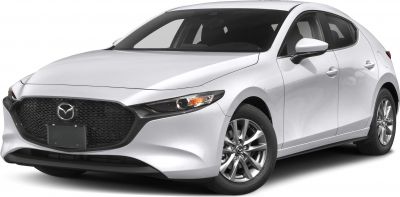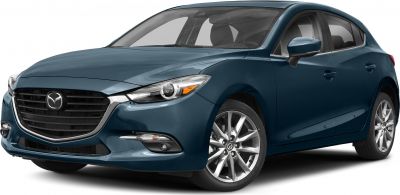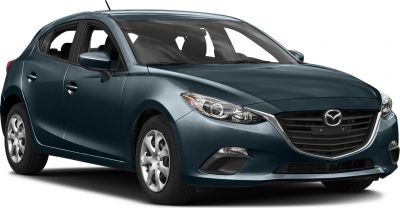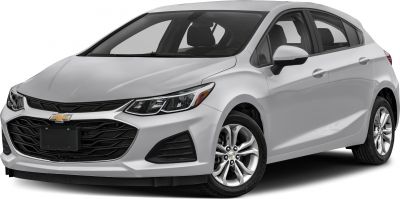 2017 Hyundai IONIQ Dimensions, Size & Specs
2017 Hyundai IONIQ Dimensions, Size & SpecsMeasurements of the 2017 Hyundai IONIQ, engineered for optimal performance and comfort
| Dimensions | |
|---|---|
| Length: | 4470 mm176.0 in14.7 ft |
| Width: | 1820 mm71.7 in6.0 ft |
| Width (Opened Mirrors): | 2060 mm81.1 in6.8 ft |
| Height: | 1450 mm57.1 in4.8 ft |
| Ground Clearance: | 140 mm5.5 in0.5 ft |
| Trunk Capacity: | 341-455 liter12.0-16.1 cu ft |
| Trunk Capacity (Max): | 1401-1505 liter49.5-53.1 cu ft |
| Weight Specifications | |
| Curb Weight: | 1370-1505 kg3020-3318 lbs |
| Maximal permitted Weight: | 1870-1970 kg4123-4343 lbs |
| Tire Specifications | |
| Rims Sizes: | 16-inch rims:
|
| Tire Sizes: |
|
The Hyundai IONIQ, produced from 2016 to 2019, represents a compact hatchback that merges eco-friendly technology with practical dimensions for everyday use. Measuring 4470 mm (176 inches) in length, the IONIQ offers a balanced footprint suitable for urban driving as well as longer journeys. Its width spans 1820 mm (71.7 inches) with side mirrors folded, extending to 2060 mm (81.1 inches) when mirrors are opened, providing a clear understanding of space requirements for parking or navigating tight spaces. The vehicle stands at a height of 1450 mm (57.1 inches), contributing to its aerodynamic profile and sleek design.
Curb weight ranges between 1370 to 1505 kg (3020 to 3318 lbs), depending on the specific trim and configuration, while its maximum allowable weight falls between 1870 to 1970 kg (4123 to 4345 lbs). This weight range ensures stability and performance, especially with the hybrid or electric powertrains the IONIQ offers. Its ground clearance, or ride height, is set at 140 mm (5.5 inches), which strikes a balance between agility and comfort on various road surfaces.
The luggage capacity provides versatility and practicality: standard trunk volume varies from 341 to 455 liters (12 to 16 cubic feet), expandable significantly to 1401 to 1505 liters (49.5 to 53.1 cubic feet) with rear seats folded, making it convenient for carrying larger cargo loads.
The Hyundai IONIQ rides on rims available in several sizes including 6.5J x 16, 6.0J x 15, and 7.0J x 17, paired with corresponding tire sizes such as 205/55 R16, 195/65 R15, and 225/45 R17. These variations allow for driver preference in handling characteristics and aesthetic appeal.
Overall, the Hyundai IONIQ blends efficiency and compact design, suited for drivers seeking an environmentally friendly hatchback with solid cargo capabilities and manageable size dimensions. These specifications make it competitive in the compact hatchback segment while maintaining functional daily usability.
Discover the standout features that make the 2017 Hyundai IONIQ a leader in its class
Have a question? Please check our knowledgebase first.
The Hyundai IONIQ hatchback from the 2017-2019 production years measures 4470 mm (175.98 inches) in length, 1820 mm (71.65 inches) in width, and 1450 mm (57.09 inches) in height. These dimensions place the IONIQ in the compact hatchback segment, offering a balance of manageable size for urban driving and interior spaciousness. The width with opened mirrors expands to 2060 mm (81.10 inches), which is important to consider for garage or parking space navigation. These exterior dimensions help ensure good maneuverability while providing sufficient cabin space for passengers and cargo.
The curb weight of the Hyundai IONIQ hatchback produced between 2016 and 2019 ranges from 1370 kg to 1505 kg (3020 to 3318 lbs), depending on trim level and options. Its maximum permissible weight varies between 1870 kg and 1970 kg (4123 to 4344 lbs). The curb weight is the vehicle's weight without passengers or cargo, but with all standard equipment and a full tank of fuel. The maximum weight includes passengers, cargo, and any additional load the vehicle is designed to carry safely. This weight range highlights the relatively lightweight design of the IONIQ for efficiency while maintaining structural integrity and safety.
The Hyundai IONIQ offers a versatile luggage capacity that ranges from 341 liters (12.04 cubic feet) with the rear seats up to 455 liters (16.06 cubic feet), depending on configuration. When the rear seats are folded down, the cargo space dramatically increases, providing between 1401 liters (49.47 cubic feet) and 1505 liters (53.14 cubic feet) of storage volume. This increased capacity is ideal for carrying larger loads, whether for daily errands, road trips, or bulky items. This flexibility makes the IONIQ practical for a wide variety of lifestyle needs.
The Hyundai IONIQ features a ground clearance of 140 mm (5.51 inches). This moderate ride height is typical for compact hatchbacks and is designed to balance aerodynamics and stability with adequate clearance over common road obstacles. While this clearance is sufficient for urban and highway driving, it is less suited for off-road conditions or very rough terrain. The lower ride height helps improve handling and reduces aerodynamic drag, contributing to better fuel efficiency and a smoother driving experience.
The Hyundai IONIQ comes equipped with several rim and tire size options depending on the trim level and market. The rims available include sizes 6.5J x 16, 6.0J x 15, and 7.0J x 17 inches. Corresponding tire sizes include 205/55 R16, 195/65 R15, and 225/45 R17, allowing for a mix of comfort, handling, and efficiency preferences. These combinations provide a good compromise between ride quality and responsive handling characteristics suitable for a compact family hatchback.
Yes, the Hyundai IONIQ fits comfortably into a standard garage. The vehicle's width is 1820 mm (71.65 inches), although with side mirrors opened the width extends to 2060 mm (81.10 inches). Standard garages typically have a width of around 2400 mm to 2700 mm (94.5 to 106.3 inches), so there is sufficient clearance on both sides to park the car safely or open the doors. The length of 4470 mm (175.98 inches) is well within the average garage length, which is often over 4800 mm (189 inches). However, careful maneuvering is advised, especially in tight spaces or if other items are stored inside the garage.
The Hyundai IONIQ launched in 2016 as the first generation of its model and does not have a direct predecessor under the same nameplate, as it was the pioneering compact hybrid/electric hatchback from Hyundai in this segment. However, compared to similar earlier Hyundai hybrid models like the Hyundai Sonata Hybrid, the IONIQ is smaller and more compact, with a length of 4470 mm versus roughly 4850 mm for the Sonata. The IONIQ’s design focused on aerodynamics and efficiency, setting it apart with its hatchback body style and compact dimensions conducive for urban environments.
The Hyundai IONIQ fits squarely in the compact hatchback category alongside competitors like the Toyota Prius, Nissan Leaf, and Kia Niro. With a length of 4470 mm (175.98 inches), width of 1820 mm (71.65 inches), and height of 1450 mm (57.09 inches), it is comparable in footprint to the 2017 Toyota Prius (approx. 4540 mm length), slightly shorter but similarly wide. Its luggage capacity of 341-455 liters is also competitive, allowing ample storage compared to rivals. The IONIQ tends to have lower ground clearance than some competitors, emphasizing aerodynamic efficiency optimized for electric and hybrid powertrains. Overall, its size offers a practical blend of interior space and city-friendly exterior dimensions.
The Hyundai IONIQ offers a comfortable interior designed to maximize space for passengers in a compact hatchback format. While specific interior dimensions vary slightly by trim and configuration, the vehicle's 4470 mm length and relatively wide body translate into decent headroom and legroom for both front and rear passengers. The 1450 mm height contributes to comfortable seating positions without feeling cramped. The rear seats also provide enough room for average-sized adults on short to medium trips. Combined with flexible luggage space, the interior is well-suited for small families or commuters needing efficient but comfortable transport.
The Hyundai IONIQ was designed as a key player in eco-friendly mobility, available in hybrid, plug-in hybrid, and electric variants during its 2016-2019 run. Its lightweight design, aerodynamic shape, and efficient powertrain options combine to deliver excellent fuel economy and lower emissions compared to conventional vehicles. For example, the hybrid variant offers very competitive fuel consumption figures, which help reduce running costs and environmental footprint. Additionally, the electric model produces zero tailpipe emissions, contributing to cleaner air in urban settings. Overall, the IONIQ advances Hyundai's commitment to sustainable transportation with versatile eco-friendly options.
Discover similar sized cars.

| Production: | 2019-present |
|---|---|
| Model Year: | 2019 |
| Length: | 4460 mm175.6 in |
| Width: | 2028 mm79.8 in |
| Height: | 1440 mm56.7 in |

| Production: | 2017-2018 |
|---|---|
| Model Year: | 2017 |
| Length: | 4460-4470 mm175.6-176.0 in |
| Width: | 2053 mm80.8 in |
| Height: | 1455-1465 mm57.3-57.7 in |

| Production: | 2013-2016 |
|---|---|
| Model Year: | 2013 |
| Length: | 4460 mm175.6 in |
| Width: | 2053 mm80.8 in |
| Height: | 1455 mm57.3 in |

| Production: | 2004-2006 |
|---|---|
| Model Year: | 2005 |
| Length: | 4400 mm173.2 in |
| Width: | 1725 mm67.9 in |
| Height: | 1395 mm54.9 in |

| Production: | 2001-2004 |
|---|---|
| Model Year: | 2002 |
| Length: | 4385-4400 mm172.6-173.2 in |
| Width: | 1695-1725 mm66.7-67.9 in |
| Height: | 1380-1400 mm54.3-55.1 in |

| Production: | 2018-2022 |
|---|---|
| Model Year: | 2018 |
| Length: | 4419-4445 mm174.0-175.0 in |
| Width: | 1992 mm78.4 in |
| Height: | 1405-1452 mm55.3-57.2 in |

| Production: | 2019-present |
|---|---|
| Model Year: | 2020 |
| Length: | 4470 mm176.0 in |
| Width: | 2045 mm80.5 in |
| Height: | 1450-1475 mm57.1-58.1 in |

| Production: | 2018-present |
|---|---|
| Model Year: | 2019 |
| Length: | 4453 mm175.3 in |
| Width: | 1791 mm70.5 in |
| Height: | 1465 mm57.7 in |
